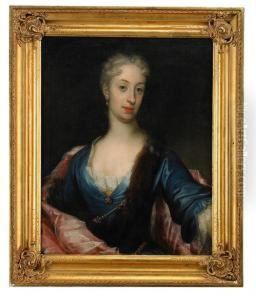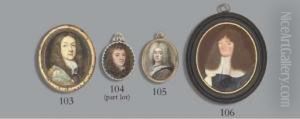David Ii Richter Paintings
David II Richter, born in 1661 in Stockholm, Sweden, was a distinguished painter of the Baroque period. He came from an artistic family; his father, David Richter the Elder, was also a renowned artist. David II was one of the prominent members of the Richter family, who were well-known for their contributions to art in Sweden and across Europe during the 17th and 18th centuries.
Richter received his initial training from his father and later continued his studies in various parts of Europe, which was common for artists of his time. He traveled extensively and spent time in countries such as Germany and Italy, where he was deeply influenced by the Baroque style. In Italy, he was particularly affected by the works of the Old Masters, which had a lasting impact on his artistic approach.
After his travels, David II Richter returned to Sweden, where he became an esteemed court painter. He was known for his landscape paintings and architectural pieces, which were highly appreciated for their detailed representation and use of light and shadow. Richter's landscapes often depicted idyllic and pastoral scenes that were popular among the European aristocracy of the era.
Apart from his landscape works, Richter also created historical paintings and portraits. However, it is his landscapes that have garnered the most attention and have been considered his most significant contribution to the art of the period. His mastery in rendering the natural world, with its intricate details and atmospheric effects, has been celebrated by art historians.
David II Richter's career flourished during his lifetime, and his works were sought after by patrons across Europe. He became a respected member of the artistic community and significantly influenced the development of landscape painting in Sweden. Richter passed away in 1735, but his legacy lived on through his paintings, which continued to inspire other artists and remained an important part of the European artistic heritage.



